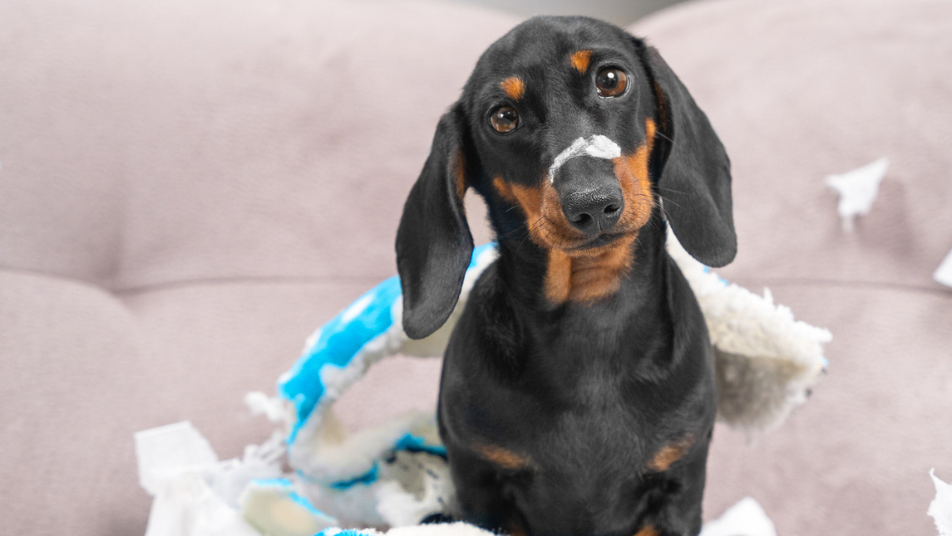As someone who partners with a therapy animal, you probably feel deeply confident in your dog. You know their personality inside and out, and you trust their training. You might even feel almost certain they would never bite anyone, jump on a client, or cause any harm.
That trust is the foundation of your partnership, and it’s an important one. But when it comes to animal-assisted interventions (AAI), incidents aren’t always what we imagine. They don’t have to involve aggression, harm, or dramatic events. In fact, most incidents are minor accidents, yet they can still have major consequences if you aren’t properly prepared and insured.
Being ready for those “little things” is what sets professionals apart. It’s also what earns the trust of clients, administrators, and institutions who need assurance that you are a responsible professional.
What Counts as an Incident?
Many providers are surprised to learn what qualifies as an incident. Here are a few common examples:
- Property damage: Imagine your dog picks up a child’s toy during a session and accidentally punctures it. That seemingly small mistake is considered an incident.
- Emotional impact: Suppose a client eagerly approaches your dog, but your animal chooses to avoid the interaction. If the client feels rejected or becomes upset, you now have an incident that requires a thoughtful response (even if your animal was simply expressing a healthy boundary).
- Startling behavior: A dog barks in the hallway and unintentionally startles a resident, leaving them upset or distressed.
- Accidental injury: A cat kneads (or, “makes biscuits”) in someone’s lap and his or her claws prick the person’s pants . . . or even their skin.
- Sanitation issue: A dog vomits on a rug during a session, which creates both sanitation concerns and property damage.
These examples remind us that incidents aren’t just about physical safety. They can also have an emotional or financial impact.
How to Prepare for and Respond to Incidents
The good news: preparation goes a long way. By setting up systems ahead of time, you can respond to incidents with confidence and professionalism. Here are a few key considerations:
- Create an Incident Management Process
Before you begin offering AAI, create a standardized incident report form. Include the date, time, detailed description of the incident, and your immediate response. Be sure to also document next steps for the provider, animal, and client. Having this process in place allows you to act quickly and consistently if something occurs. The Getting Started in AAI course from AAAIP walks you through how to build these systems into your practice from day one. - Get the Right Insurance Coverage
A dependable insurance provider is a cornerstone of ethical practice in AAI. They are supposed to protect you, your animal, and your clients in the case of an incident. Having comprehensive coverage also gives you peace of mind, so you can focus on your work knowing you have strong support behind you. - Follow Health and Safety Protocols
Zoonotic diseases (those that can transfer between animals and humans) are a critical area of risk management. Keep your animal current on vaccinations, practice excellent hygiene during and after sessions, and teach clients about proper handwashing. By prioritizing infection prevention, you protect both your clients and your therapy partner. For deeper guidance on health and safety, AAAIP offers a Zoonotic Disease Prevention course that equips professionals with the knowledge to reduce risks and protect both clients and animals. - Set Clear Expectations from the Start
From the very first conversation about AAI, provide clients with transparent information about both the benefits and risks of working with animals. Explain what you do to mitigate those risks and how your therapy animal may choose to participate in sessions. For example, if you let clients know up front that your dog may sometimes take space, they are far less likely to feel distressed when it happens in practice. Also consider cultural differences: some clients may view animals differently, and clear conversations prevent misunderstandings.
The Bigger Picture
One of the most encouraging things about AAI is that, overall, incidents are relatively rare—especially when best practices are followed. That said, preparation is not about assuming the worst. Instead, it’s about honoring your clients, your animal, and yourself by making sure that if something unexpected does occur, you are ready to respond with professionalism and care.
Final Thoughts
At the heart of AAI is trust: trust in your animal, in your skills as a provider, and in the relationships you build with clients. By having clear processes, strong insurance coverage, and transparent communication, you’re not just managing risks. You’re modeling ethical, responsible practice.
Ready to take the next step?
- Take the practice test for the Animal-Assisted Intervention Specialist Certification (C-AAIS) to see where you stand.
- Explore AAAIP membership to access specialized insurance and helpful resources
When handled well, even small incidents can be opportunities to demonstrate integrity, compassion, and professionalism. And that’s something that benefits everyone—especially the clients and animals at the center of your work.
